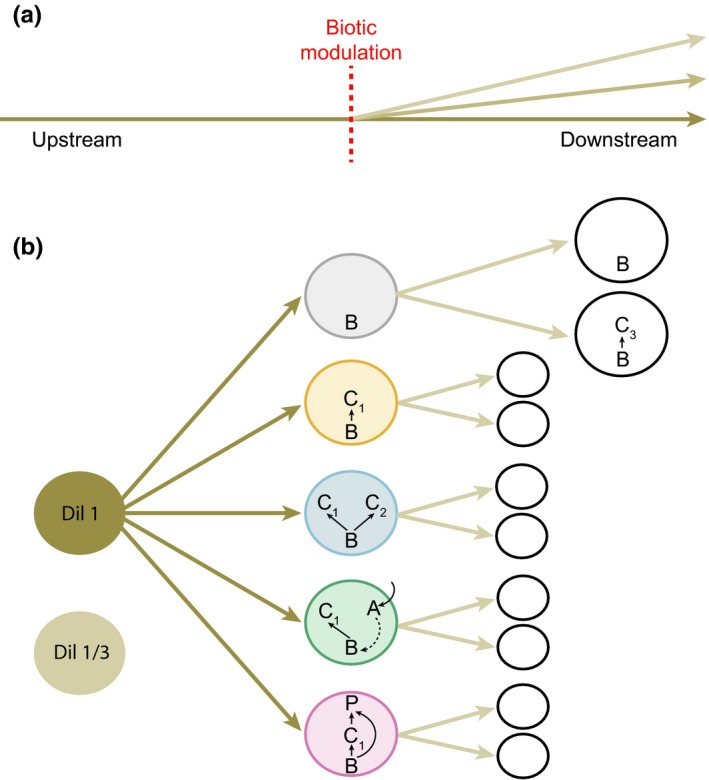Figure 1.

(a) In many ecosystems, resource flow is directionally biased; as they move downstream, these resources will be integrated, processed, and modified by biotic communities (biotic modulation) meet along the way with potentially important implications for downstream community dynamics. In our experiment (b), starting from an initial resource pool (brown circle: standard protist medium, either nondiluted or one‐third diluted), we test the effect of contrasting upstream community structures (descending order from trop: bacteria alone, monoculture, competition, facilitation, and predation) on bacteria populations in two downstream communities with different trophic structures (one vs. two trophic levels). The two first downstream communities are enlarged to exemplify composition and internal dynamics; analogue settings were present for all downstream systems. B: mixture of three bacteria species (Serratia fonticola, Bacillus subtilis, and Brevibacillus brevis), C1: Colpidium sp., C2: Paramecium aurelia, A: Euglena gracilis, P: Daphnia pulicaria, C3: Tetrahymena pyriformis
